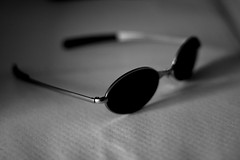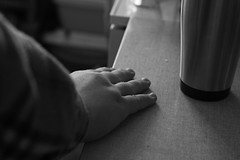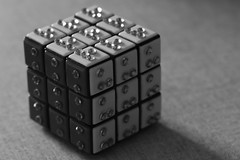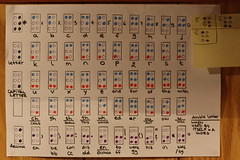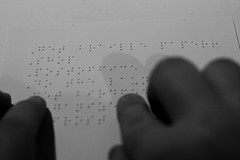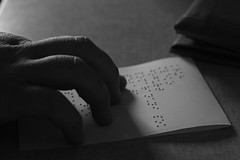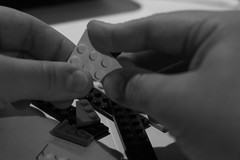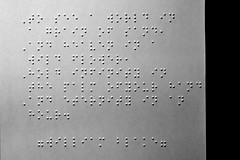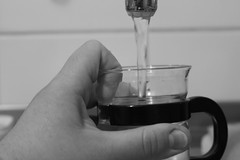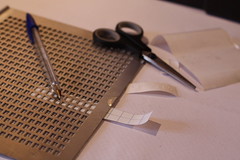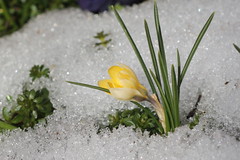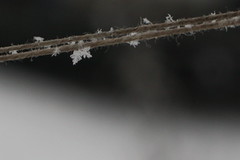Visual comes in many forms...
The other day some friends came around for a visit. They brought their two little children with them. The kids love to draw and whenever I was at my friends' house I would draw pictures for the two children and they would colour them. This time, however, I couldn't draw for them, since I can't see my pen and paper. But even if you're blind, you can still draw. So, the kids became totally enthusiastic when I took out my drawing tool: a spiky metal wheel on a wooden handle. I embossed some pictures for them and the two were absolutely thrilled when they tried to identify my pictures with their eyes closed! I had to keep the pictures simple: a cat, a dog, a flower, and this little house with a garden. The kids took the pictures home with them. This one got left behind, so I decided to photograph it together with my drawing tool and show you that blindness doesn't mean the loss of visual - it just means that the visual comes in a different form.
Drawing with the tool works the same as embossing Braille. You roll the spiky wheel over the paper and draw the mirror image of a picture. When you flip the paper over, you can run your fingers over the bumps of the picture.


